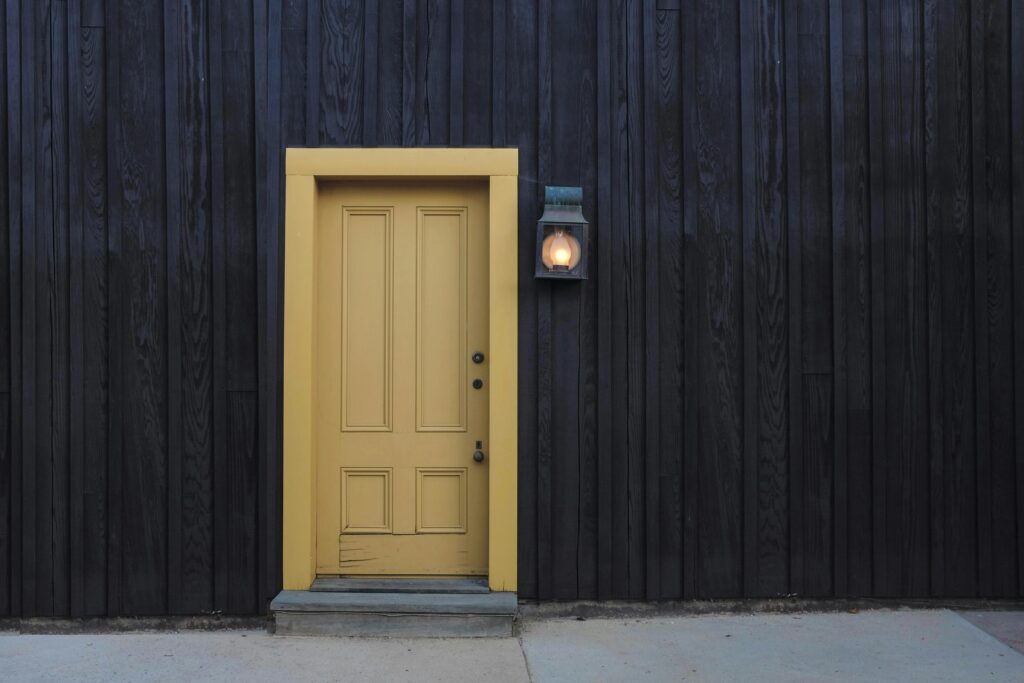Best Wood for Door Design – A Complete Guide for Style, Strength & Durability
If you’re planning a new door for your home or workspace, choosing the right wood is the most important step. A well-designed door is not just about looks—it should be sturdy, long-lasting, weather-resistant, and easy to maintain. In this blog, we’ll discuss the best types of wood for door designs, along with their features, benefits, and ideal uses. Whether you’re designing for a modern space or a traditional home, this guide will help you make the perfect choice.
✅ 1. Teak Wood – The King of Door Materials
Why It’s Popular
Teak is one of the most preferred woods for premium doors. It has a natural golden-brown finish and rich grain patterns.
Key Benefits
- Highly durable and long-lasting
- Naturally resistant to termites and moisture
- Ideal for polished and carved door designs
- Minimal maintenance
Best For: Main doors, heavy-duty exterior doors & classic traditional styles
✅ 2. Mahogany – Elegant & Strong
Mahogany offers a smooth finish and deep reddish-brown color that gives doors a luxurious look.
Key Benefits
- Resistant to bending and cracking
- Great for carving intricate designs
- Good termite resistance
- Holds polish very well
Best For: Premium interior doors, panel doors & ornamental designs
✅ 3. Sal Wood – Strong & Affordable Choice
Sal (Shorea robusta) is commonly used in Indian homes for both frames and main doors.
Key Benefits
- High strength and structural stability
- Less expensive than teak
- Good for humid or coastal areas
- Can be painted or polished
Best For: Door frames, solid doors & rustic designs
✅ 4. Sheesham (Indian Rosewood) – Stylish & Durable
Sheesham has rich patterns and darker tones that enhance wooden interiors.
Key Benefits
- Durable and strong
- Visually appealing texture
- Suitable for both modern and traditional doors
- Easy to polish
Best For: Bedroom and living room doors, designer frames & decorative panels
✅ 5. Oak Wood – Premium Western Choice
Oak is widely used in high-end furniture and doors due to its attractive grain.
Key Benefits
- Hard and durable
- Available in white and red oak variants
- Gives a premium aesthetic
- Ideal for panel and veneer doors
Best For: Premium interior doors, European-style homes & custom modern designs
✅ 6. Cedar – Lightweight & Weather-Resistant
Cedar has a natural aroma and smooth finish, making it a great option for interior spaces.
Key Benefits
- Lightweight but strong
- Naturally resists insects and moisture
- Doesn’t warp easily
- Budget-friendly
Best For: Interior doors, closet doors & partition doors
🔹 Solid Wood vs Engineered Wood – What to Choose?
| Feature | Solid Wood Doors | Engineered/ Veneer Doors |
|---|---|---|
| Durability | Very High | Moderate to High |
| Cost | Expensive to Mid-Range | Budget-Friendly |
| Maintenance | Occasional polishing needed | Easy maintenance |
| Design Flexibility | Limited carving options | Wide design and finish choices |
| Moisture Resistance | Depends on the wood species | High (with good laminates) |
Tip: For main doors, always go with solid wood types like teak, mahogany or sal. For indoor doors, engineered or veneered designs can also work well.
✅ Factors to Consider Before Choosing the Wood
✔ Purpose – Main door or interior?
Exterior doors need stronger, moisture-resistant wood.
✔ Climate – Dry, coastal or humid area?
Choose woods like teak, sal or mahogany for durability in Indian weather.
✔ Budget – High-end or economical?
Teak and oak are premium; sal and sheesham offer mid-range options.
✔ Design Style
Modern doors may use veneer and minimalistic designs; traditional doors need carved or solid panels.
🏠 Final Recommendation
For a main entrance door, Teak is the best all-round choice due to its strength, elegance and termite resistance. For interior doors, Sheesham, Sal, or Cedar offer great value. If you want a luxury touch, Mahogany or Oak can elevate your door design.
Choosing the right wood sets the foundation for both beauty and performance. Whether you’re building a new home or upgrading interiors, make sure the wood matches the purpose, style and budget of the project.
